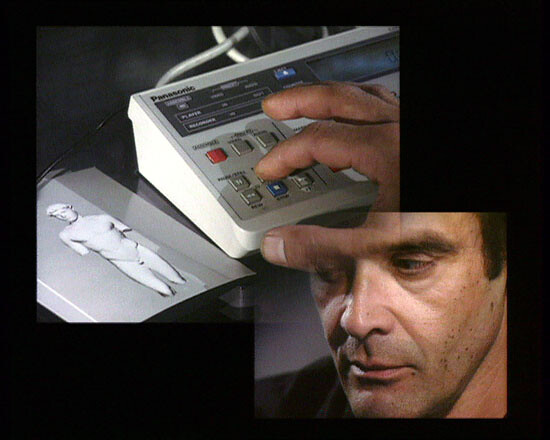Alexander Alberro: When did you first meet Harun Farocki?
Thomas Elsaesser: In the summer of 1976, I spent time in Berlin researching a book on New German Cinema, interviewing as many filmmakers as I could, but also critics. I knew Farocki as a critic, from the articles he wrote for Filmkritik, but had not seen any of his films. If I remember right, I had an introduction through one of his fellow students from the days at the DFFB, Ingrid Oppermann. One sunny afternoon, I visited Harun in his apartment in the Nassauische Strasse in Berlin-Wilmersdorf. I had just published a long piece on Rainer Werner Fassbinder (“A Cinema of Vicious Circles”) that I presented as my visiting card, but it proved an unfortunate move, since he seemed bodily repulsed by the idea of someone seriously writing about Fassbinder. In the ensuing argument, Harun was so sharp and witty, and such good company that I said to myself: What do I care if he trashes my writing? This is someone I could spend hours with. And he was very generous. He lent me his tripod for my super-8 camera. I borrowed it as an excuse to visit him again.
Only very recently, after his death, I realized that this wasn’t in fact our first encounter. Farocki spent part of his childhood in Indonesia, and in 1956, at the age of twelve, he published his first piece of prose, about a man who entered the house under false pretenses and used a moment of inattention to steal a silver ashtray. This was all attentively witnessed by Harun, already then an observational documentarian in the making. His short essay was published in a German youth magazine called Rasselbande, a sort of alternative to Mickey Mouse. As it happens, in 1956 I was the paper boy for Rasselbande in my hometown, so I must have held in my hands and distributed the very issue that carried Farocki’s article. For almost sixty years, then, I’m proud to say, I have been helping to spread Harun’s work.
AA: While Farocki’s work is evidently very concerned with various forms of montage and with the kind of distantiation that montage can realize, he didn’t think according to a logic of binarism and opposition but rather in terms of a logic of difference.To what extent do you think that this logic of difference, as I’m referring to it, directed his filmic and artistic practice?
TE: At least since Derrida and deconstruction we know about the pitfalls of binary thinking, that any either-or opposition risks being already co-opted: the alternative isn’t an alternative, but the subordinate term in relation to the dominant. This has important political implications that I think Farocki was intuitively well aware of: in the struggle against capitalism, acts of “resistance” and notions such as “opposition” had to be used strategically rather than as primary responses to the dominant power structures. Just as hackers and Apple might well end up living in a symbiotic relationship—as host-and-parasite, rather than as outright foes—Farocki realized that a system can use its opponents as a way to self-regulate and stabilize itself. His term for this kind of symbiosis or relation of antagonistic mutuality was Verbund, which he was able to retool for his own purposes. In the late 1920s and early 1930s, competing German steel manufacturers decided to form a conglomerate and cooperate, and a number of chemical firms formed the trust that became IG Farben. Verbund as a strategic alliance of differently motivated agents was initially the German translation of “trust” or “cartel.” Farocki applied the Verbund method metaphorically to his own work, to signal how he used different media—television commissions, film reviews, political filmmaking, radio plays, book reviews—so the work done for one assignment could feed into several of his other projects.
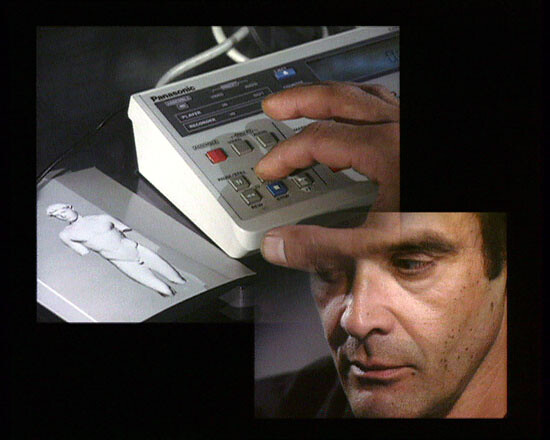

But Verbund is also a useful term if one wants to understand the principle behind Farocki’s practice of separating and joining. It was typical for him to join what wants to hide the nature of its connection (famously, security prisons and shopping centers via spatial dispositifs of surveillance), and to separate what we are used to thinking of as belonging together (for instance, work as wage labor). What Goes Without Saying (Eine Sache die sich versteht) was the ironic title of a film that Farocki made with Hartmut Bitomsky in 1971. A key passage read:
In chapter four of Das Kapital, Marx portrays the act of exchange as a balancing act, and makes what seemed obvious become a problem. The authors are attempting to achieve a similar ambivalence: they want to make a person walking think about what walking is, and fall over.
To come back to binary relations: Wie Man Sieht, for instance, is at first glance very much about the binary logic of the computer. But the film challenges this logic by proposing a more organic or modulated relation between things, positing a reversible relation between plowshares and canons, or opening up the opposition between horses and tanks during WWI. It explores the difference between German motorways laying a grid over the landscape, after the American model, or inflecting them towards a “European” option that makes them follow the contours of the various types of terrain. The film then compares this to a butcher cutting the meat along the lines of the different body parts.
Farocki’s ideas about montage, as your question implies, were complex and sophisticated and in this respect, the logic of the “and-and” (parataxis) prevailed over “either-or.” For instance, Schnittstelle (Interface) sets up a series of moves between Schreibtisch (writing desk) and Schneidetisch (editing table), where each can take on the functions of the other (writing/editing; leaving out/combining with): the precise cut that allows for new associations, in a sort of conceptual Kuleshov effect. In an early essay I published on Farocki in 1983, I put it as follows:
The paradox is that Farocki is probably more brilliant as a writer than as a filmmaker, and that instead of this being a failing, it actually underlines his significance for the cinema today and his considerable role in the contemporary political avant-garde. Only by turning itself into “writing” in the largest possible sense can “film” preserve itself as a form of intelligence.1
Farocki also had a rare gift for what one might call recto and verso thinking (as opposed to “on the one hand, on the other” thinking). He used to say: you take a clipping from a newspaper article and put it away. Five years later you come across it again, but now it’s the item on the reverse side that grabs you, except that the final paragraph is missing.
AA: Farocki’s move from cinema spaces to art spaces related on the one hand to the radical change in European public television in the 1980s and ’90s, where everything became much more homogenized and the broadcast space that used to be available to directors like Farocki for more experimental films disappeared, and on the other hand to a larger move in the culture where many more museum spaces are built than spaces for experimental cinema. As Farocki moved into the art world, he began to work more with film loops, double or multiple screens, and spatial montages. How much do you think his work changed as it moved from one space to the other?
TE: His transition from filmmaker to installation artist was also an act of separating and connecting. He distributed the linear flow of film across the monitors of his installations, creating new connections, as in Deep Play and Comparison via a Third (both 2007). Applying the principle of montage to space, he challenged visitors to experience this separating and connecting in their own bodies’ peripatetic trajectory. But he was very agile in keeping the same principles going whether in single or multi-channel, as in Workers Leaving the Factory, reworked as multichannel, in Comparison over a Third (both single and multichannel) or in The Silver and the Cross: a work that keeps a dual focus (then/now, painting/static long take), and when the camera explores the huge canvass of the painting, it follows the winding paths and tracks, making us part of the different crowds depicted, wandering peripatetically up and down the silver mountain, as if the painting was an installation and we film viewers were also gallery visitors.
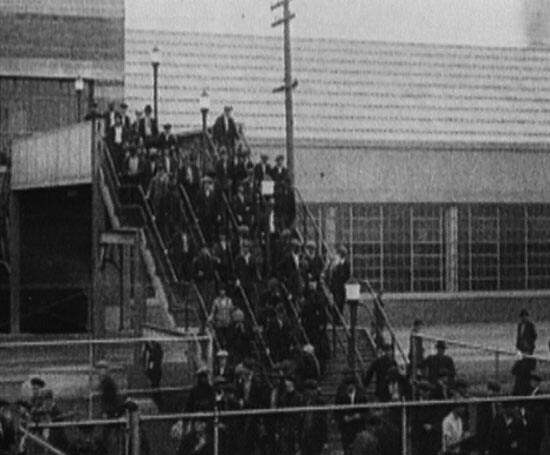

But the move from cinema to gallery—quite apart from the economic factors that you hint at, the drying up of cinema venues for avant-garde films, as well as the disappearance of late-night television slots for experimental work—was also a logical step as cinema lost its status as a socially relevant public sphere and surrendered this role to the art world. And true to his Verbund model, Farocki has tried (successfully) to remain present in the socially and aesthetically most politicized art forms. Today, this is the art installation, the essay film, and other documentary forms, and not television or independent feature films.
AA: Given the prevalence of drone culture and the US National Security Agency’s almost total surveillance program, the somewhat threatening notion of surveillance or of being imaged from above that one finds in Images of the World and The Inscription of War, the Eye Machine series, or even in I Thought I Was Seeing Prisoners, seems to have been prescient. One gets the impression from watching these films that there’s something ominous in being surveilled, whether from above or in any other way. Yet today, while we know we’re being surveilled more than ever before, many people just don’t seem to care—or, pushing this even further, find that surveillance makes them feel safer rather than mistreated. So, two questions really: To what extent do you think that investigating the growing world of surveillance was important for Farocki’s work? And how closely do you think his films capture the shifts in public attitudes to surveillance over time?
TE: I think already Images of the World showed the dynamic relations inherent in acts of surveillance—as both deadly and ignorant, as both pleasurable and threatening. The film at several points highlights the ironies inherent in the word Aufklärung in German, which can mean: reconnaissance, enlightenment, the clearing of the skies of clouds, and sex education. If the US reconnaissance planes in 1944 were seeing Auschwitz and not “seeing” Auschwitz, it points to the fact that surveillance can be a form of stupidity, giving a treacherous sense of being in control. The irony there is that these surveillance photographs of Auschwitz were only discovered because an officer in the late 1970s was so moved by the television series Holocaust that he remembered once seeing pictures of the camps in a filing cabinet in the Pentagon. It took a fictional program to bring to light this documentary evidence, but it also confirmed that the Allied’s war aims were not the rescue of Jews, but to dismantle and destroy Germany’s war machinery, in this case the Buna synthetic rubber factory, part of the Monowitz slave labor camp near Auschwitz.
I think it is these parapraxes, these slips, that suddenly reveal unexpected connections or surprising disconnects in our world that makes Images of the World such an indelibly impressive work. The film made the rounds in the US just about at the time of the First Gulf War (1991), which was our first acquaintance with “smart bombs.” Remember General Schwarzkopf on the evening news, with his pointer stick, showing us the little puffs of smoke that followed the “surgical strikes” on Iraqi positions, highways, or bridges? This was our first introduction to Serious Games. Not only did Schwarzkopf have a name right out of Thomas Pynchon’s Gravity’s Rainbow—his demos made him look like he had stepped out of Farocki’s film.
Farocki also saw the many ironies in us “enjoying” this bird’s eye view of destruction, this first-person–shooter perspective, where we are one with the camera without realizing that this camera would be killed along with the target, i.e., that the pleasure of sharing the point of view of a camera-bomb had a price: it was deadly.
As to feeling safe when surrounded by machines, Farocki seemed both puzzled and saddened by our general lack of awareness about the consequences of being seduced by these new toys—these sophisticated vision machines and surveillance devices. He saw how eager and ready we are to internalize capitalism’s relentless drive to extract use value—i.e., profit—from our minds and bodies, and how easily we mistake this drive for self-optimization and performativity as self-knowledge and enlightenment.The degree to which civil society and the human sciences are becoming militarized in this process was one of the themes of his last installations.
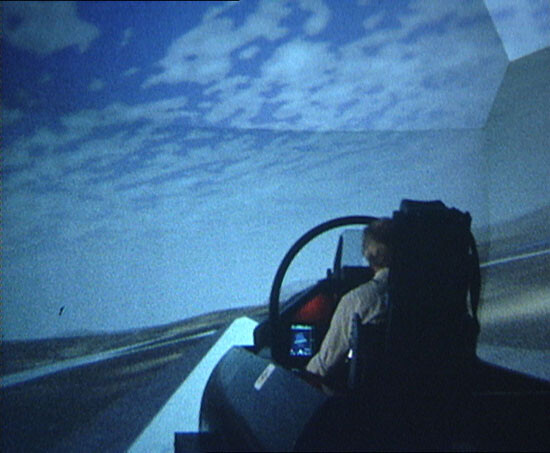

AA: Many of Farocki’s films also employ scientific pictures—operative images that weren’t really meant to be looked at aesthetically, but to be studied as technical or illustrative tools. These types of images are visual, of course, but they’re entirely different from those that proliferate in our general visual culture where images are produced for entertainment or educational (or advertising) purposes. To what extent do you think that Harun purposefully cultivated the aesthetics of this type of image?
TE: This use of images from very different sources and contexts—I once called them the other S/M practices of the cinematic apparatus, images produced for purposes of science and medicine, surveillance and the military, and taken from sensors and monitoring devices—is among Farocki’s most daring, lasting, and far-reaching contributions to film history and media archaeology. Farocki calls them “operational images” and in Images of the World, he has traced their line of descent back to one Albrecht Meydenbauer, inventor of photogrammetrics (Messbild-Photographie) as a means of not only recording historic buildings like churches or steeples, but to calculate scale and dimensions, in order to render them accurately in the forms of architectural plans and diagrams. In the film, Farocki ties this invention to the shock and trauma of nearly having been killed when trying to scale such a building in situ, so that operational images are images that carry with them the memory of places or the anticipation of situations too dangerous for human beings to be present in the flesh.
In a similar spirit, Lev Manovich makes the distinction between images that we use to “lie” with (simulation, as-if, make-believe) and images we use in order to “act” with (take action at a distance, extract actionable data, initiate a process). Insofar as operational images are images that no longer function like a “window on the world,” they point the way to a new definition of what an image is. These are changes we tend to associate with the digital turn, but which really just remind us that moving images and still images have many histories, not all of which pass through the cinema or belong to art history. Digital images may merely have made these parallel histories more palpably present, but operational images, as Farocki clearly saw, are part of the visual culture that surrounds us. For instance, his film about a Playboy shoot for a centerfold (An Image [Ein Bild], 1983) documents how much labor has to be invested in creating operational images, even those that say: “look how beautiful I am.” One could go even further and say that operational images—images that function as instructions for action—are the new default value of all image-making, against which more traditional images, i.e., images meant merely to be contemplated, watched disinterestedly, or which function as either “window on the world” or “mirror to the self,” have to define themselves.
Instead of looking at images, we are more and more clicking on images.
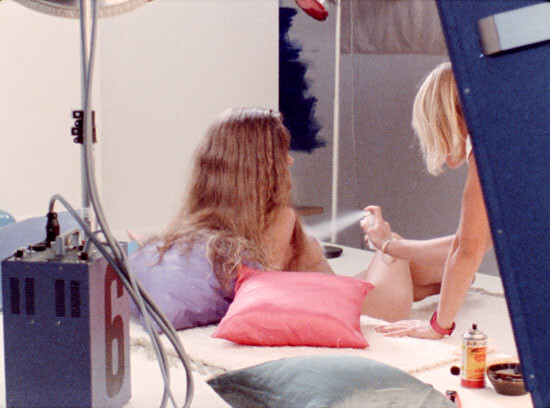

AA: You’ve gone on the record to say that Farocki was well aware of how the visible and the intelligible were drifting ever further apart in the late twentieth and early twenty-first centuries. Can you elaborate on and explain what you mean by this, and give us an idea of how it played out in Farocki’s films?
TE: In Farocki’s early films, the reference point about the visible and the intelligible parting company is, broadly speaking, Brecht’s famous remark quoted by Walter Benjamin: “The situation is complicated by the fact that less than ever does the mere reflection of reality reveal anything about reality. A photograph of the Krupp works or the AEG tells us next to nothing about these institutions. Actual reality has slipped into the functional.” This is basically the premise of both Between Two Wars (Zwischen den Kriegen) and Before Your Eyes Vietnam (Etwas wird sichtbar).
But in the more recent installations, the dilemma is more general. There, Farocki seems to ask: How do we meet the challenge of visibility and visualization, when more and more phenomena that govern our lives are not visible to the human eye, because they are either too big or too small, too fast or too slow, or they deal in magnitudes and quantities we cannot comprehend other than in diagrams or mathematical equations?
It is where concepts such as “trauma” and “simulation” take on a new urgency. Not with trauma as a medical category (i.e., where the idea might still prevail that there is “normal memory” and “proper recall,” and there is “trauma” and “post-traumatic stress disorder”) or where simulation is the copy without the original in Baudrillard’s sense (i.e., there is still a reality we can see and describe, and then there is this reality’s mere simulation). Rather, where trauma and simulation have become two ways of naming and framing the no-longer-visible, which nonetheless has determining force, in terms that indicate the borders and limits of the visible and the intelligible: Serious Games I–IV and Parallel I–IV are for me examples of this testing of the limits of visibility and intelligibility under certain conditions.
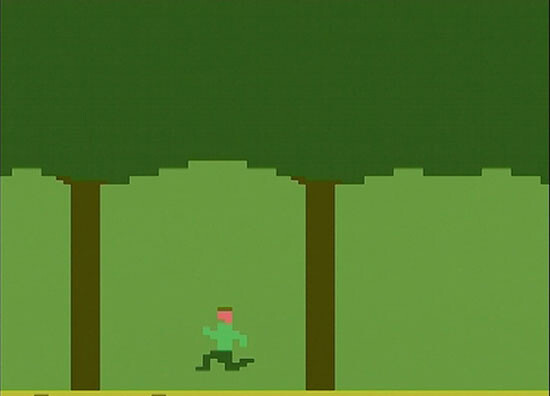

And there is the matter of the voice, the commentary, the making visible through words. Farocki used voice-over in several of his films—and was criticized for it, for instance, for using a female voice-over in the English-language version of Images of the World—and some people found his films rather too didactic because of the words. But that is to overlook all the gaps that his laconic commentary created between the sentences, exactly as he created gaps between the images. In other words, he was really very aware of the difference between editing as creating the blanks into which we can insert ourselves, and editorializing, i.e., appropriating material from others, and making it say what he wanted it to say. Just as often he obliged himself—and encouraged us—to listen into the pictures, so as to bring out what an image might want to say, or might have wanted to say. In that sense, his mastery of editing both words and images was also his ability to be a very good listener.
AA: Another trait of Farocki’s films is that they indexically point to what lies on the margins of the field of vision. For instance, in Images of the World and The Inscription of War, the Allied reconnaissance camera photographs Auschwitz in the Second World War but it doesn’t see what it has photographed because that’s not what it’s looking for; or in Workers Leaving the Factory, the workers are depicted as they leave the factory, but the labor that they carried out for many hours in that factory isn’t represented. To what extent do you think that in such cases (and one can think of numerous others in Farocki’s work) the missing countershot—the concentration camp, say, or the workers in the factory—is the driving element of the film?
TE: I like the idea of the missing countershot. It complements what I just said about editing versus editorializing, i.e., the way the cut in Farocki creates a gap, it generates a kind of conceptual Kuleshov effect. You have to “see” things that are not shown, the way that Chris Marker in the opening of Sans Soleil says that it’s the black leader that has to convey the sense of happiness he felt at the sight of the three children in Iceland.
Take Farocki’s film installation In Comparison (also known as Comparison via a Third), where the viewer is invited to speculate as to what entities are being compared, or what the missing third might be. When I saw it in Vienna, the projector was quite audible, and across the comparison between different methods of brick-making and brick-laying I began to imagine what was not mentioned: that the third might be filmmaking itself—as both an activity of building something brick by brick, but also as a collective, communal activity, as brick-making is in India and Africa. This of course stands in contrast to the increasing computerization of filmmaking (and brick-making) in Europe, as if to contrast the community of a film crew with the more solitary postproduction work, especially when shooting digital. But I also had the idea that bricks can build a house, a school, or a factory that makes deadly weapons. None of this is directly mentioned.
But your question also touches on another important topic, namely framing, reframing, unframing images, and what they represent. Images of the World is crucially about framing and revealing, quite literally in the series of photographs of Algerian women who were forced to unveil for the French colonial authorities, and where Farocki’s hand covers them again, as if to protect them from prying eyes.
Another form of reframing is at issue with the aerial reconnaissance photographs of Auschwitz in Images of the World we discussed earlier. The pilots took photographs of Auschwitz, but they didn’t know what Auschwitz would become. The reframing occurred in the mid 1970s, when the television series Holocaust helped shift the perception of WWII and put at the center of the war effort the fate of the Jews, as can be seen, for instance, in the permanent exhibition at the Holocaust Memorial in Washington, where the narrative is framed by the US Army liberating the camps. A temporal reframing of meaning and context occurs with the trophy photos taken by a camp guard at the Auschwitz ramp, and only discovered, years later, as part of an “album,” that is, photos taken with the future in mind—the future of the Thousand Year Reich, not the eternal shame of the German people, which they now document. Again, Farocki uses his own hands as a frame, to both shield and reveal the woman at the center of the photo that features so prominently.
But in another twist, Images of the World itself underwent a kind of reframing through its international reception and the intervening historical events. Made over a period of years and completed in 1989, it was a film protesting against atomic energy and Pershing Missiles on German soil. However, it was not shown until 1990–91, after the end of the Cold War—the fall of the Soviet Union—when the threat of atomic warfare had receded. As Farocki himself put it, Images of the World went out into the world as a film against nuclear arms, and came back to him as a film about smart bombs and the Holocaust.
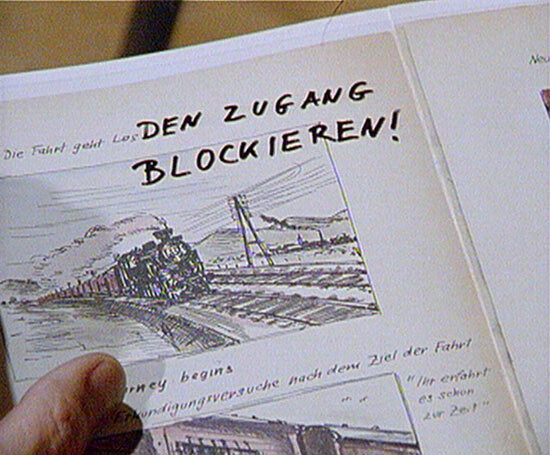

AA:Rather than a form of direct communication through images that he produced, Farocki often seemed to rely on preexisting images to mediate his communication with the spectator. What do you think the logic of this strategy was? Was it economic? Was it anti-auteurist? Was it an attempt to produce a form of distantiation in the Brechtian sense, insofar as distantiation is a form of indirectness?
TE: I don’t think that his use of found footage was either anti-auteurist or primarily for economic reasons. He was more an ethnographerof all those situations, those locations, those people who made use of moving images or indeed still images for purposes other than display or spectacle. At first he was fascinated by the function of role-play, test-drives, drills, and rehearsals of emergency situations—in short, how performative approaches to social life had taken hold of society, indeed had begun to define the social: the film Leben BRD is a great—sad, funny, and deeply ironic—inquiry into this obsession with rehearsing (for) living. Later, Farocki became interested in the function that images have in this permanent performative staging of life, how social life has acquired a layer or film of spontaneous virtuality. What might once have been the preserve of the fire brigade or the military, i.e., training for a mission or for an emergency, has bled into everyday life, either in the name of self-improvement and optimization, or for the sake of risk aversion and security. In Serious Games, about PTSD-therapy simulations, or the most recent works on gaming and virtual worlds, Farocki had begun to document both the pragmatic and the ludic uses that such image-worlds initiate, as well as the feedback loops that result. In other words, these are extensions or further explorations of Farocki’s strategic understanding of operational images, and how they begin to define for us what an image is. In one of his last interviews, Farocki speaks of his sense that images are no longer about representing the world, but about how to intervene in the world, they are no longer images as reproduction even in Walter Benjamin’s sense, but images as realities in their own right.
Thomas Elsaesser, “Working at the Margins: Two or Three Things not known about Harun Farocki,” Monthly Film Bulletin no. 597 (October 1983): 269.
Category
Subject
A version of this conversation took place at Artists Space in New York on September 8, 2014. All images courtesy of Harun Farocki and Antje Ehmann.
